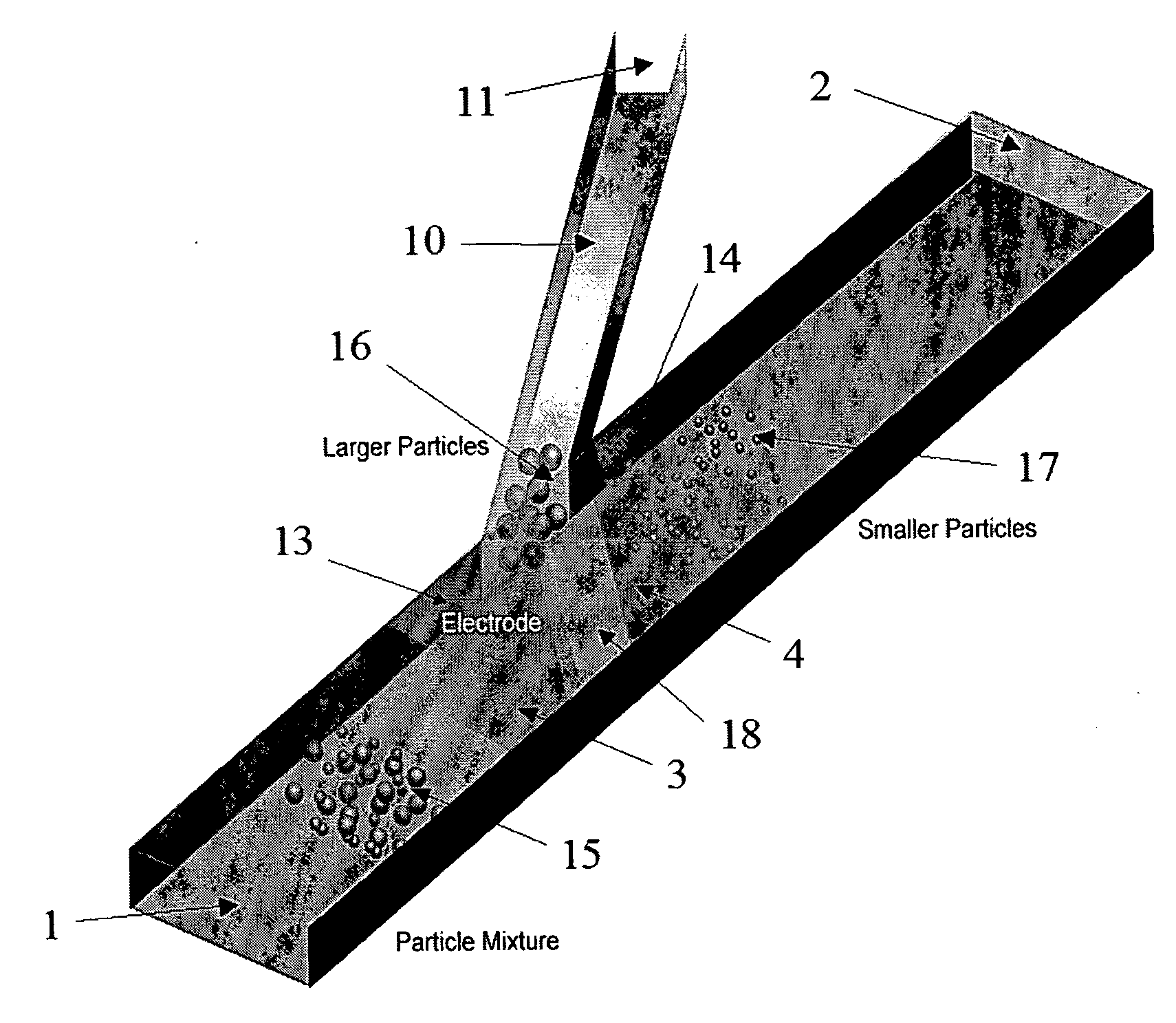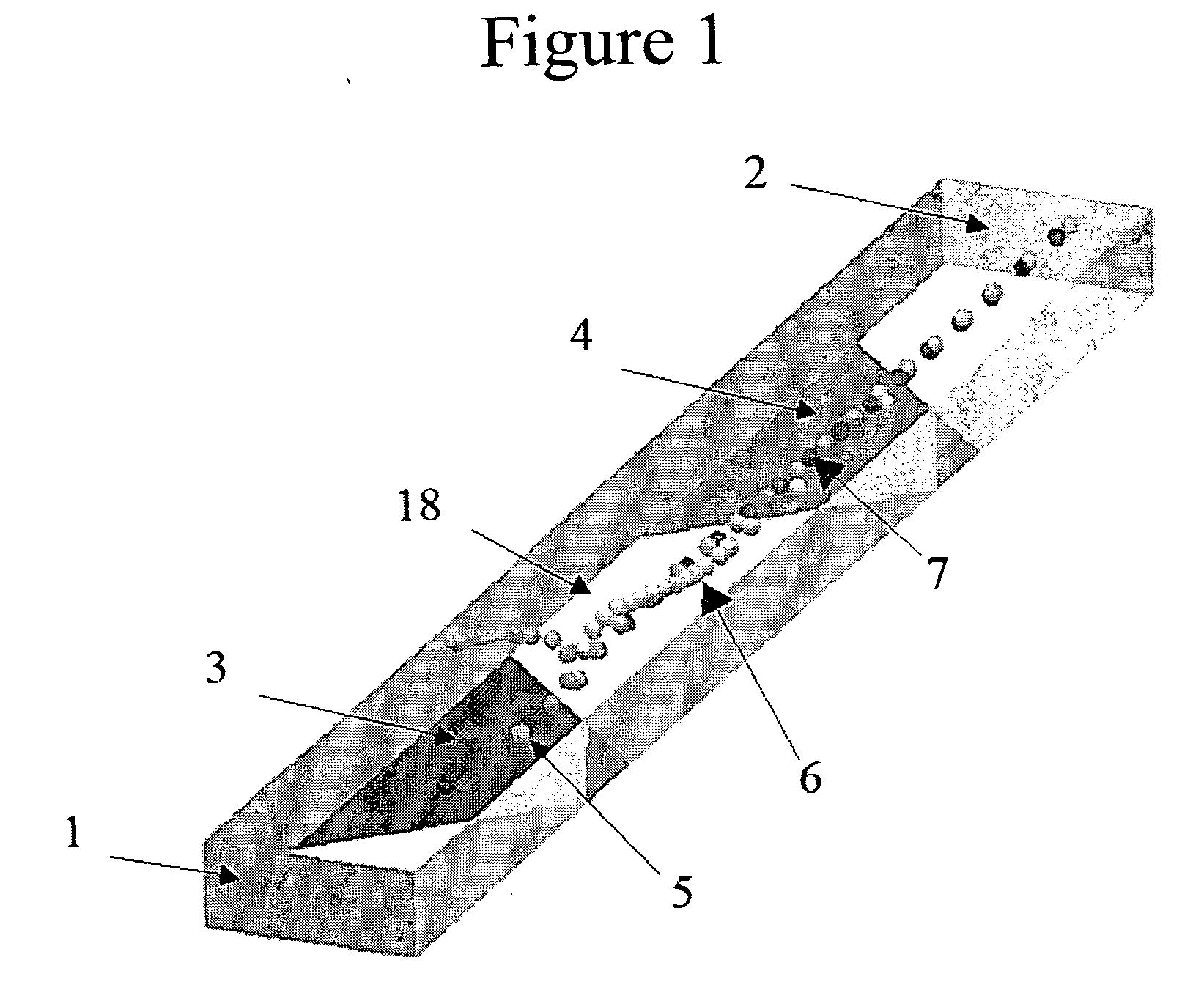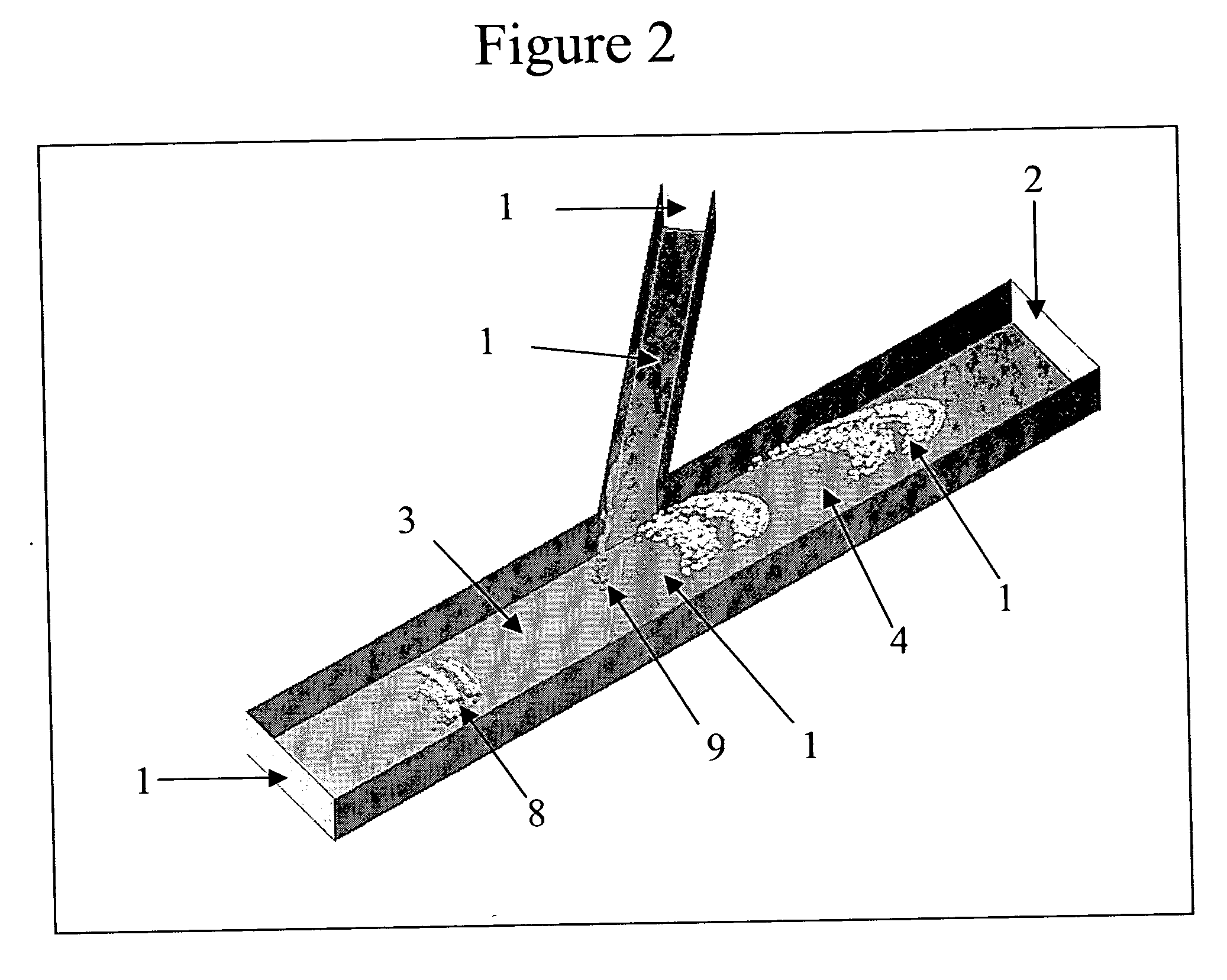Method and apparatus for separating particles by dielectrophoresis
a technology of dielectrophoresis and particle separation, which is applied in the field of microfluidic systems, can solve the problems of limited sample processing rate of flow channels using such electrode arrangements, limited electric fields and dep forces, and limitations of conventional microfluidic dep sorting devices, etc., and achieves the effect of easy tuning to trap/separa
- Summary
- Abstract
- Description
- Claims
- Application Information
AI Technical Summary
Benefits of technology
Problems solved by technology
Method used
Image
Examples
examples
[0049] Separation Chambers: One exemplary separation chamber is illustrated in FIG. 4 and has dimensions of 0.8 mm in width and 0.2 mm in height (normal to the view shown). The inter-electrode gap distance is 0.1 mm for both top and bottom electrode pairs. The side channel forms a 45° angle with the upstream portion of the main flow channel and is 0.2 mm in width and height. Another exemplary separation chamber is shown in FIG. 3, which has the same dimensions as the separation chamber in FIG. 4 but the side channel forms an angle of less than 45° with the downstream portion of the main flow channel.
[0050]FIG. 1 illustrates a separation chamber having no side channel and an electrically coupled pair of electrodes in the bottom surface of the flow channel. The gap between electrodes is non-uniform because the shape of the gap is a trapezoid. The separation chamber in this case 50 μm wide and 20 μm deep.
[0051] The length of any separation chamber will depend upon the number of elect...
experimental examples
[0055] A separation chamber having the same dimensions and components as described for the preceding simulation was fabricated and tested. Polystyrene beads having diameters of 1 μm and 9 μm were suspended in water and 1% BSA. Inositol was added until the density of the aqueous solution was equal to the density of the polystyrene beads. The particle suspension was introduced into the inlet of the separation chamber having a flow rate of 2.4 μL / min. The 9 μm beads were diverted into the side channel by applying an AC signal of 10 Mhz frequency and 20 V (p-p) with 180° phase shift to the electrode pairs.
[0056]FIG. 8 shows a prototype separation chamber in use, focusing on the region around the electrodes 3 and 4 and the side channel 10. The dimensions of the separation chamber are the same as those in FIG. 4. The bottom electrode pair 3 and 4 is visible and eclipses the opposing top electrode pair. The inter-electrode gap 18 between the top pair of electrodes 3 and 4 is visible. Blac...
PUM
| Property | Measurement | Unit |
|---|---|---|
| Angle | aaaaa | aaaaa |
| Angle | aaaaa | aaaaa |
| Distance | aaaaa | aaaaa |
Abstract
Description
Claims
Application Information
 Login to View More
Login to View More - R&D
- Intellectual Property
- Life Sciences
- Materials
- Tech Scout
- Unparalleled Data Quality
- Higher Quality Content
- 60% Fewer Hallucinations
Browse by: Latest US Patents, China's latest patents, Technical Efficacy Thesaurus, Application Domain, Technology Topic, Popular Technical Reports.
© 2025 PatSnap. All rights reserved.Legal|Privacy policy|Modern Slavery Act Transparency Statement|Sitemap|About US| Contact US: help@patsnap.com



